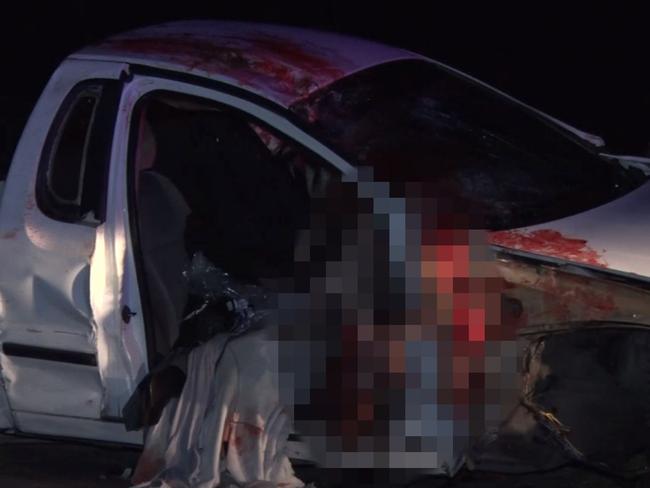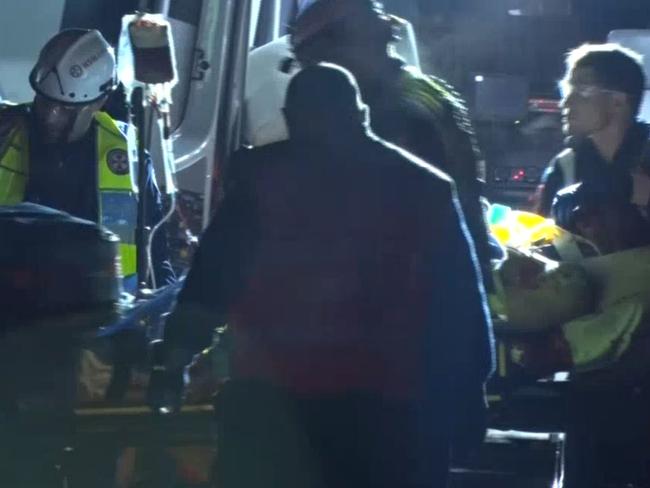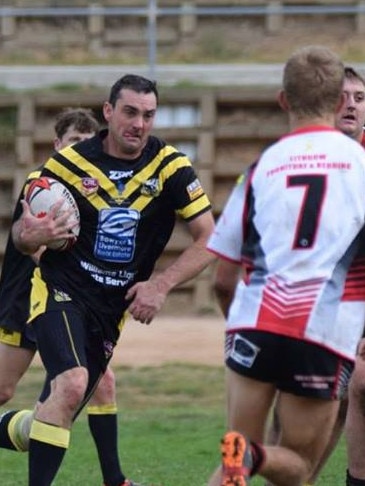NRMA data shows 20 per cent spike in motorists hitting animals
Nathan Doggett has no recollection of the night he collided with a kangaroo. The budding rugby league player spent six weeks in a coma, defying doctors with his survival, speaking now for the first time.
NSW
Don't miss out on the headlines from NSW. Followed categories will be added to My News.
Nathan Doggett had just finished a night training session for his rugby league team and was driving to pick up a pizza when a kangaroo changed his life forever.
The kangaroo leapt onto Piper’s Flat Rd at Portland near Lithgow around 7pm on June 29 last year and collided with a car travelling about 80km/h.
The animal bounced off the car and slammed into the driver’s side front of Mr Doggett’s ute as he travelled in the opposite direction and then smashed through the windscreen.
Mr Doggett suffered serious head and facial injuries. He was in a coma for six weeks.
But, the 33-year-old says, “I’ve been incredibly lucky ever since” — he survived.

Sydney street that netted council $1m in parking fines
‘Terrorist fears’ after 30 tonnes of fertiliser stolen
He is also one of what the NRMA has revealed is a spiralling number of motorists crashing into animals because of the state’s cold weather and drought conditions.
Mr Doggett, who played for the Portland Colts, has no memory of the incident but believes he would have been travelling at the road’s 100km/h speed limit.
“The Westmead Hospital doctor who operated on me the night of the accident said he was astounded that I was still alive when he arrived for work the next day,” the Bathurst man said.
Mr Doggett fractured his skull, nose and two eye sockets as well suffering from two punctured lungs and rupturing a disc in his back.
He’ll never play rugby league again, has short-term memory problems and can only “hope” to return to work as a coal miner.
“In the time before my accident I had noticed a lot more kangaroos near the road,” he said.
“They were forced to go there because of the drought conditions and they needed to eat the better grass which was by the side of the road.”


Mr Doggett said he is not surprised by the increase in animal collisions — especially with kangaroos.
NRMA insurance data obtained exclusively by The Sunday Telegraph has revealed a 20 per cent spike in vehicle-animal accidents between 2017 and 2018.
While kangaroo collisions are common in Sydney’s outer areas, cats, dogs and birds have been the biggest culprits in suburbs closer to the city centre.
Marsden Park, St Clair and Camden also saw up to 12 major accidents each where motorists had to lodge an insurance claim.
NRMA Insurance researcher Chris Emerson said they are expecting an increase in claims as the weather cools.


“If you’re heading away any time over winter, it’s really important that drivers are on the lookout for animals on the roads — particularly at dawn and dusk,” Mr Emerson said.
“If you spot an animal on the road while driving, remember to brake but don’t swerve as this may cause a collision with other cars.”
Across the state, kangaroos accounted for 12,988 (or 90 per cent) of all claims made in 2018.
Wombats (476), deer (211), dogs (154), cats (133) and emus (97) were also commonly involved in collisions.
“When driving in an area where animals could be present — whether on country highways or suburban streets — take note of any signage about local wildlife and slow down,” Mr Emerson said.
“Wildlife can be unpredictable and often drivers won’t get prior warning before an animal appears in front of them.
“Colliding with wildlife is not only traumatic for both the animal and driver but can cause considerable damage to cars and also result in injury.”
Originally published as NRMA data shows 20 per cent spike in motorists hitting animals


